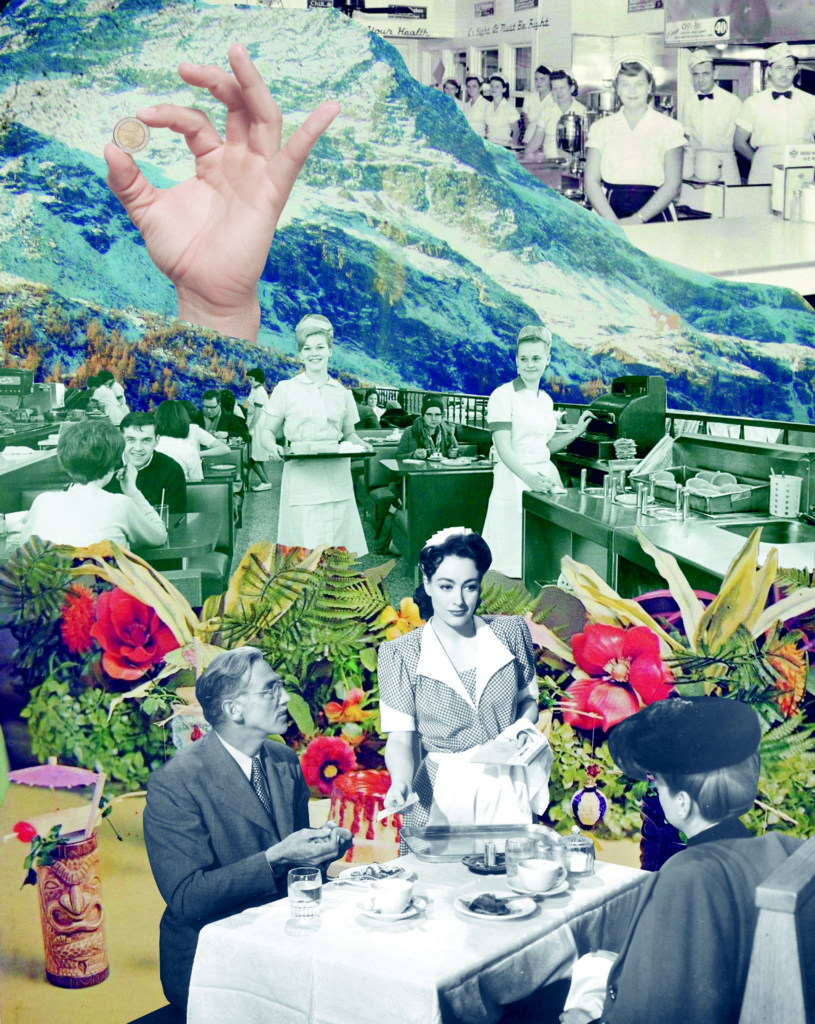“Is there service charge? Should we leave a tip?”
These are common questions among diners when checking the bill. The answers may vary from person to person, and the fine line between service charge and tip blurs along the way.
Unlike other countries with tipping standards and expectations, the Philippines does not have a set tipping culture. In Japan, where tips are always tantamount to an insult to their usual service or the United States, where waiters run after customers for their obligatory 15 to 20 percent tip, the practice in the Philippines is quite confusing.
In most restaurants in the Philippines, customers would not even question a restaurant bill with a 10 percent service charge. However, it’s also common for customers to discover that their new favorite restaurant does not collect service charge. Despite this pleasant surprise, customers would wind up giving a tip ranging from P50 to P200, which in most cases is way below the standard 10 percent service charge.
Considering that the Philippines does not have a standard tipping culture, it’s important to understand the effect of including and excluding service charge in a customer’s bill.
The Labor Code doesn’t provide any ceiling on the amount (an outlet can choose to charge as much as 100 percent of the total bill), but simply directs how the service charge collected should be distributed and paid: 85 percent paid equally twice a month to all rank-and-file employees and the remaining 15 percent for management to answer for losses, breakages, and distribution to managerial employees.
What exactly is a service charge? According to the Labor Code and its implementing rules, service charge is the amount collected by hotels, restaurants, lodging houses, nightclubs, and cocktail lounges, among others, that is reflected in a customer’s receipt to show how much the establishment is charging for its service.
The Labor Code doesn’t provide any ceiling on the amount (an outlet can choose to charge as much as 100 percent of the total bill), but simply directs how the service charge collected should be distributed and paid: 85 percent paid equally twice a month to all rank-and-file employees and the remaining 15 percent for management to answer for losses, breakages, and distribution to managerial employees.
(Editor’s note: The law has been amended to ensure that 100 percent of the amount will be distributed to covered employees. See our update here)

If instead of service charge, tips given are pooled, then the Code requires the tips to be accounted for and distributed in the same manner as service charges following the 85 percent-15 percent rule.
Once service charges are included in the bill, an establishment that decides to remove it will have to integrate it as part of an employee’s wages. The amount considered part of the employees’ wages is the average monthly share (based on 12 months preceding) he used to receive as their participation in the service charge collected.
Now comes the question: Should restaurant owners include service charge in their bill? There are two factors to consider: First, the increasing total cost of service to be passed onto the customer, and second, the benefit of incentivizing the employees.
Some restaurant owners emphasize the importance of keeping prices at a minimum in order to retain their current clientele base and attract more customers. They believe that adding service charge in the bill, in lieu of tips, would hurt their business. In their case, imagine a small stall selling sweets or a fast food restaurant collecting service charge; it is easy to picture frustrated customers resenting the additional cost and the minimal service delivered.
The practice of tipping was created as an informal means to increase salaries. Unless pooled and shared with all employees, the tips collected would only benefit the servers themselves. However, the preparation and service of the food to be eaten by customers does not start and end with the serving staff—it begins with the people who cook the food, who clean the dishes, and even who repair the chairs.
For others, the addition of a service charge is necessary because of the kind of service provided by the restaurant. They believe that customers could bear the added cost in appreciation of the service rendered. Now, imagine a fine dining restaurant where servers are at a customer’s beck and call serving four to six courses; in this scenario, a customer would expect service charge to be included in their bill.
Other restaurant owners recommend the inclusion of service charge because it results in incentivizing their employees, including the kitchen and administrative staff who would not normally benefit from tips.
The practice of tipping was created as an informal means to increase salaries. Unless pooled and shared with all employees, the tips collected would only benefit the servers themselves. However, the preparation and service of the food to be eaten by customers does not start and end with the serving staff—it begins with the people who cook the food, who clean the dishes, and even who repair the chairs.
The law prescribes that the addition of service charge is based on a restaurant’s discretion alone. The following questions can be asked if a restaurant should include it:
1. Can your clientele afford the additional cost of service charge?
2. Do you feel the need to incentivize your non-server, rank-and-file employees?
3. Does your restaurant require your staff to provide constant and regular service as your customers are dining?
Ultimately, whether pooling tips or including service charge, a restaurant owner may want to consider promoting a practice that benefits all those involved, as compared to relying on tips. At the end of the day, it is up to the restaurant owner to find that perfect balance between satisfied customers, happy and hardworking employees, and a profitable business.
Originally published in F&B Report Vol. 15 No. 5












































